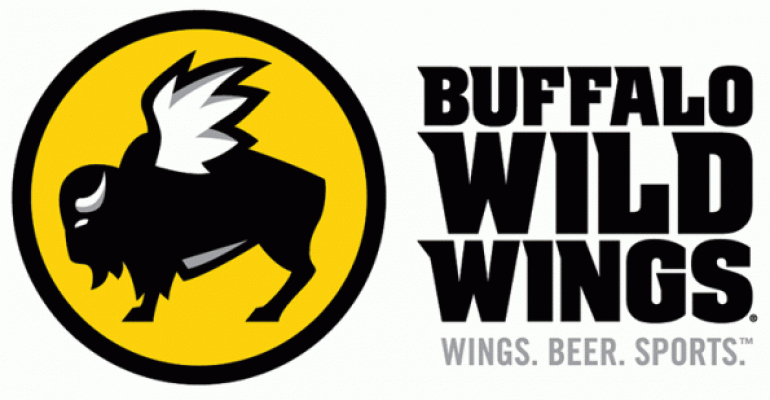In the midst of its weakest sales streak since going public in 2003, Buffalo Wild Wings Inc. is finding hope in customers who prefer to eat chicken wings at home.
Take-out accounted for 16 percent of the Minneapolis-based casual-dining chain’s sales in the third quarter ended Sept. 25. The company plans to bolster take-out sales in the coming quarters.
“We’re focused on staffing the take-out area with our best team members and improving operational execution,” Buffalo Wild Wings CEO Sally Smith said, noting that the chain also plans to bolster its online ordering platform and mobile app.
Buffalo Wild Wings same-store sales fell 1.8 percent at company locations in the third quarter, and declined 1.6 percent at franchised locations, the third straight quarter of declines. Same-store sales have now fallen in only three quarters over the past 13 years.
Executives said during a call Wednesday with analysts that they expect same-store sales to drop again in the fourth quarter because of the impact of Hurricane Matthew in October, combined with calendar shifts during the holidays.
Still, executives said that same-store sales improved each month during the third quarter. The company said that its initiatives to generate more traffic at lunch, with a 15-minute guarantee, and on Tuesdays with its Half-Price Wing Tuesdays promotion, have been working.
Take-out could also provide a longer-term lift without stealing dine-in business.
“I don’t think it’s a matter of choosing between an in-restaurant visit and a take-out visit,” Buffalo Wild Wings COO James Schmidt said during the call. “Our view of take-out is that the consumer is looking for a take-out experience, and so our approach is to embrace take-out. We think there’s a great opportunity in take-out.”
In addition to traditional take-out, Buffalo Wild Wings is expanding a delivery test. The chain offers delivery at 90 company-owned locations, with various third-party vendors.
“While we’re only three weeks into the pilot, we’re already seeing great top-line momentum in delivery,” Smith said.
“I think eventually it could be applicable to the entire store base,” she added.
Investors were pleased with the results on Thursday, bidding up the company’s stock 6 percent. Going into the day, Buffalo Wild Wings stock was down 14 percent year to date, and was down by a third since breaching $200 per share last September amid sales worries.
In light of that performance, activist investor Marcato Capital Management LP has pushed Buffalo Wild Wings to make changes, notably by no longer acquiring franchisees and by selling company-owned locations to operators.
Although Buffalo Wild Wings executives didn’t mention Marcato during the call, those issues were at the forefront of their minds, and the minds of analysts.
“This is a pivotal time in Buffalo Wild Wings history,” Smith said.
The company recently appointed a new chief financial officer, Alexander Ware. One of his first tasks will be to analyze the company’s strategic initiatives, including refranchising, Smith said.
“We are continuing to review our various options,” Smith said. “As we said at Analyst Day, we weren’t going to be announcing anything in terms of a major refranchising until we had a CFO on board who had an opportunity to review that information along with our strategic initiatives, and it will be one of his top priorities in his first 60 days.”
In addition to generating positive same-store sales again, Buffalo Wild Wings wants to get its margins back over 20 percent of revenue. It is doing that in part by looking for ways to cut costs.
“Our goal is to achieve 20-percent restaurant-level margin by the end of 2018, and we’ve identified several opportunities in cost of sales, labor and operating expenses,” Smith said.
For instance, Buffalo Wild Wings negotiated reduced pricing on boneless wings and other chicken products that could improve cost of sales by 20 basis points next year. The company is also looking at reducing waste, and is looking to make scheduling improvements and even uniform changes in a bid to cut costs.
Still, Smith said, it’s going to take longer to reach the 20-percent margin than the company hoped, in part because of chicken wing prices, which have increased more sharply than the chain anticipated.
“Traditional wing prices are significantly higher than we estimated for the fourth quarter,” COO Schmidt said.
The problem? Weather.
“That’s a combination of factors that started with the heat wave in late summer, compounded by the supply chain disruption from Hurricane Matthew,” Schmidt said.
Higher demand drove up prices, too.
Contact Jonathan Maze at [email protected]
Follow him on Twitter: @jonathanmaze

